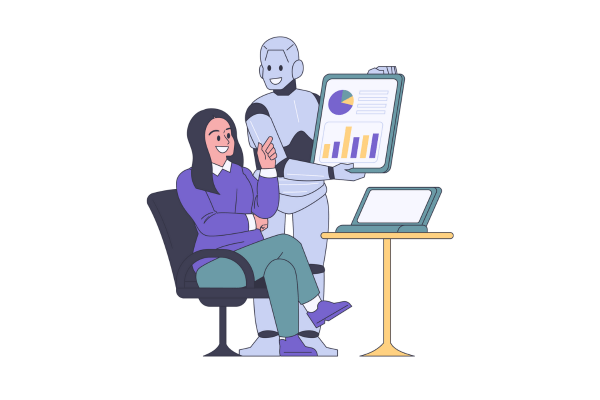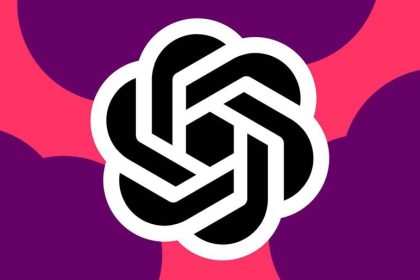With the advancement of technology and the increasing growth of artificial intelligence, this question has been created in the minds of many web designers and developers, whether artificial intelligence can replace them in the near future? Web design as a job and art has undergone many changes from the past to today, and new technologies have always come to help designers. But with the advent of artificial intelligence, a fundamental difference has been created in the attitude towards this profession.
In this article, we examine the impact of artificial intelligence on web design and its possible role in the future, and examine whether designers should worry about being replaced by machines or whether there will still be room for creativity and human capabilities.
1. The role of artificial intelligence in web design: from tool to replacement
Artificial intelligence is now present in many aspects of web design. Tools like Adobe Sensei and Figma’s Auto Layout help designers create more beautiful and efficient layouts. These tools provide features such as automatic arrangement of elements, design suggestions based on machine learning algorithms and even optimization of user experience. But the point is that still these tools only serve as an aid to designers and are not a complete replacement.
For example, artificial intelligence can help analyze user behavior and provide suggestions for better design based on the data obtained. However, the final interpretation and decision-making is still up to the designer, as machines alone cannot fully understand human needs and motivations.
2. Limitations of artificial intelligence in creativity and innovation
One of the biggest challenges for artificial intelligence in replacing web designers is its limitation in creativity and innovation. Website design is not only a science but also an art. Every web design project requires a deep understanding of purpose, brand identity, and user needs; Something that machines are not yet able to fully understand and process.
AI can follow existing patterns and automatically generate new combinations of elements, but producing an original and creative design that directly interacts with users requires human artistry and insight. Even the most sophisticated AI algorithms are still unable to fully understand the emotional elements and human experiences.
3. Can artificial intelligence manage customer interactions?
One of the most important parts of web design is interacting with customers and understanding their needs. Every web designer should be able to communicate with their customers, know their needs and create a unique design based on them. Although artificial intelligence can help analyze data and even answer some basic customer questions, it does not have the full ability to understand and empathize with customers.
In real-world situations, web designers may encounter sudden changes in customer demands, conflicting opinions, and unexpected technical problems. These positions require experience, interpersonal skills, and decision-making abilities that are currently beyond the capabilities of artificial intelligence.
4. Artificial intelligence as a helpful tool for designers
Although AI may not be able to completely replace web designers, it can play an important role as a powerful tool in improving their performance. For example, AI-based tools can help designers better understand user needs and provide better user experience by analyzing big data.
In addition, AI algorithms can automate time-consuming processes such as creating mockups and optimizing pages, thus giving designers more time to focus on the creative aspects of design. Also, artificial intelligence tools can help designers in creating and improving the user interface and user experience and create more user-friendly and effective designs through intelligent suggestions.

5. The potential of artificial intelligence in front-end development and code automation
Artificial intelligence is not only limited to the field of design, but also has great potential in front-end development. Today, tools like GitHub Copilot can help developers write better quality code faster. These tools help programmers to optimize their code using smart suggestions and avoid coding errors.
Also, some artificial intelligence algorithms can create HTML and CSS codes automatically and even make the necessary optimizations. Although these capabilities are very advanced, they still require human review and modification and are not capable of providing the final product alone.
6. The career future of web designers in the world of artificial intelligence
Due to the recent advancements in artificial intelligence, web designers should not worry about losing their jobs, but should look at this as an opportunity to improve their skills. One of the most important actions that designers can take is to learn and familiarize themselves with artificial intelligence tools. In this way, instead of competing with AI, they can use it as a partner to improve and accelerate their work.
It is predicted that in the future, web designers will focus more on the creative and strategic aspects of web design instead of focusing on repetitive and technical aspects. This change can make the job of web design become a more valuable and complex position, and designers will play a role as managers of digital strategies in organizations.
Conclusion: The combination of human creativity and the power of artificial intelligence

In general, it can be said that artificial intelligence alone is not able to completely replace web designers. Web design does not only require technical knowledge; It also requires creative abilities, human interaction and deep understanding of users’ needs and feelings. Although artificial intelligence can help improve and speed up design processes, human designers will still play the main role in web design.
Therefore, the future of web design depends on the close cooperation between humans and artificial intelligence; Where machines perform repetitive and time-consuming tasks and humans handle the creative and strategic aspects of design. With this approach, web designers can take advantage of new opportunities and create user experiences in more innovative ways that are deeply in tune with users’ needs and desires.
RCO NEWS
















